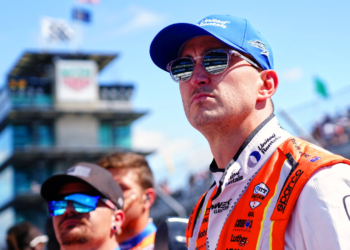The FIA World Endurance Championship has released a new set of GTE-Pro Balance of Performance (BoP) regulations ahead of the 2017 season.
Initially confirmed at the Monza Prologue, the system is designed to minimise the manual altering of performance levels after each race.
Last year, an unprecedented ten BoP changes were made during the nine-race calender, sparking dissent from the GTE manufacturers.
The new system – dubbed 'Automated BoP' – will be set between each six-hour event using performance data from the previous race.
A different system will be deployed for the 24 Hours of Le Mans, in a bid to reduce 'sand-bagging' – or the intentional masking of performance – at the first two WEC rounds.
A statement released jointly by the FIA and ACO, the two bodies that run the world championship, said:
"A calculation tool has been created which will allow the targets for balancing the different car models to be met, without human interpretation or decision-making, and using mathematical formulas based on the quantified, public, specific, measured data obtained during each race."
"The gaps between the different car models will be balanced automatically from one race to the next."
"The data recorded during the race will be used and, from this, a mathematical algorithm will automatically set the adjustments for the next race."
"The mathematical tool will dictate whether the adjustment should increase the performance of slower cars or slow down the fastest cars in order to maintain the overall performance and stability of the class throughout the season."
Automated BoP is the result of meetings between the five current GTE manufacturers – Ferrari, Ford, Aston Martin, Porsche and Corvette – plus 2018 newcomer BMW, with the FIA's technical working group.
The new system will take data from the fastest car of each manufacturer, and will discount extreme variables such as poor weather and excessively slow pace.
Only weight and power can be adjusted by Automated BoP, with subjected cars receiving a maximum 20kg weight penalty and 10kw power deficiency after each race.
The WEC statement added that the new system has been tested on data from the previous two seasons, with "very satisfactory results".
It has also been confirmed that GTE-Am will use the same performance-balancing regulations as in 2016.
Why is BoP necessary?
Matching the pace of drastically different GTE-Pro cars is no easy task.
Each model, based on a road-going derivative, has its own strengths and weaknesses and a skilled team of technicians behind it, so a form of artificial adjustment needs to be made to ensure close racing and sustained manufacturer interest.
The WEC's decision to treat Le Mans BoP separately is hugely important.
Le Mans is, of course, the most prestigious race of the year. It is renowned throughout motor racing, not just the endurance niche, and carries double points towards the world championship.
That made last year's BoP fiasco particulalry farcical, with Aston Martin, Porsche and Corvette openly expressing their outrage at the artificial advantage given to Ferrari and eventual winner Ford. They argued that those two teams were intentionally sacrificing their early-season results at Silverstone and Spa to gain an edge at the 24 hours.
Automated BoP is unashamedly clear on its motive for ensuring that such tactics do not reoccur in 2017. Although the system doesn't come into effect until after the 6 Hours of Spa (leaving room for some scheming at Silverstone) it should create an equitable environment that satisfies both the needs of the manufacturers and the fans who may have felt deprived of a 'true' race at Le Mans last year.






